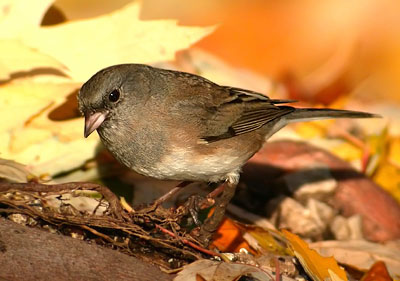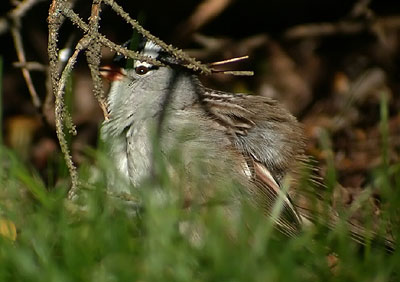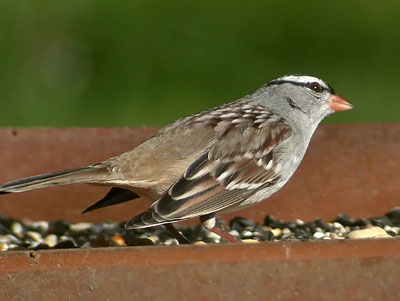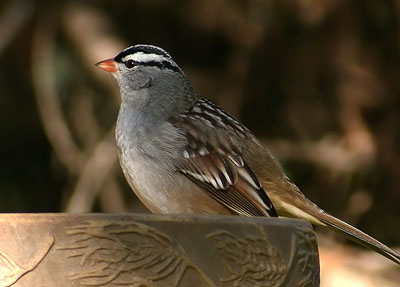
October has kept its chill in check, but yesterday's southerly winds brought down a lot of leaves from our maple trees. Lively and numerous backyard birds had me keeping an eye on our feeders and birdbaths. Dark-eyed Juncos paid no mind to me while I worked on a project to repair a leaky garden hose. The hungry birds hopped within a few feet to get at sprinkled birdseed I placed in a small circle on our patio. A recognizable chip-note caused me to look up to see a Black-throated Green Warbler. Here's a list of all the backyard bird species observed Saturday and Sunday:
Mourning Dove
Red-bellied Woodpecker
Yellow-bellied Sapsucker
Downy Woodpecker
Hairy Woodpecker
Blue Jay
American Crow
Black-capped Chickadee
Red-breasted Nuthatch
White-breasted Nuthatch
Golden-crowned Kinglet
Ruby-crowned Kinglet
American Robin
Cedar Waxwing
Tennessee Warbler
Yellow-rumped Warbler
Black-throated Green Warbler
Palm Warbler
Northern Cardinal
Chipping Sparrow
White-throated Sparrow
White-crowned Sparrow
Common Grackle
House Finch
American Goldfinch
There were over 20 White-throated Sparrows foraging beneath our spruce trees. Their antics are a treat to watch - zooming around the yard, chasing, singing, hop-scratching and jousting over birdbath rights. I also got to watch and document a White-crowned Sparrow thermoregulate its body temperature. It's fascinating to me when a particular bird's behavior coincides precisely to something written in a field guide. Take a look at this excerpt on the White-crowned Sparrow from Cornell's Birds of North America on-line:
"Adults can sense radiation and convection gradients and behaviorally thermoregulate to conserve energy. Birds reduce energy costs by sunbathing when air temperature is below 15°C, and food intake declines in response to insolation. When sunbathing, feathers of back and rump ruffled, exposing featherless tracts; head held still, open bill pointed upward, wings drooped, tail spread."

(click on image for larger version)

(click on image for larger version)
Look closely - can you see each behavioral characteristics as noted above? While it wasn't cold outside, still the bird exhibited the behavior as evening approached - perhaps in anticipation of roosting for the night.

The sparrow remained motionless for a few minutes before making a quick run to the platform feeder. And there's nothing like fresh water to wash down a meal, so the bird took turns at the birdbath when White-throated Sparrows or American Robins weren't busy monopolizing it. Just how important is water to this particular species? Here's another citation from Cornell's BNA on-line on White-crowned Sparrows:
"Drinks frequently; daily water intake is high, 45.6% of body mass. Death occurs within 1 wk on dry diet with no water. Mass loss during water deprivation is 8.9%/d of initial body mass."

If only for a few weeks or days, I'm grateful to provide a veritable oasis for these interesting and gorgeous migratory birds. In return, our backyard is decorated with great diversity of species - their presence is educational, make great photographic subjects, are pleasing to listen to and just ordinarily nice to look at and have around.
Safe journey...
Link: All about the White-crowned Sparrow from Cornell
All images © 2006 Mike McDowell

















